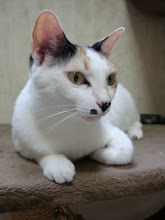• The physicalist perspective: The image of the city / Excerpt from the book - Telecity : Information Technology and Its Impact on City Form
• Designers and physical planners view the city through its materialistic time-space relationships within social symbolism. City form is the result of various configurations of these relationships expressed in everyday city life. Lynch(1960), who established the conceptual basis for the study of urban design, identified the five basic components of physical form. The visual analysis of a place is expressed in terms of paths, edges, nodes, districts, and landmarks.
• Path accommodate mode and sense of movement. While moving through them, people observe the city (street patterns and transportation networks). Along them, other physical elements are arranged and related to interactions and social behavior. Urban patterns, generally referred to as paths, consist of the network of habitual or potential lines of movement through the urban complex and as such, are the most potent means of achieving an ordered whole. Nodes are strategic foci that are typically junctions of paths or places for important activity. Because directional decisions must be made at junction, people pay greater attention to such places and perceive nearby elements with more clarity than normal.
• Elements of the city form overlap and penetrate one another. None exists in isolation, but always in relation to its surroundings. These physical elements compose a "language" to understand and manipulate the urban environment. To understand a visual element, an object should exhibit a sense of oneness, structured with other elements, and have meaning to the city inhabitants. The perceived elements and their various structures construct in cognitive schema that identifies the city. City form is reflected in our minds as mental maps. Nearly every sense is in operation, and the image is the composite of them all.
• The image of the city is the collective overlapped images of individuals.
• Since the image of the city is temporal creation, the change of perception occurs with any new state, mood, or type of activity practiced by the city' inhabitants. Speed of action and purpose of movement may alter the observer's perception in gathering urban elements to create a modified image of the environment. A vivid example is the invention of cars.
• Nodes become the most important element in the image of telecity. The image will depend mainly on the experience of its population through places of interaction rather than through movement in city paths. Nodes become the main components in structuring the image on places of action. The image will be related to the perceived image of location according to the customized observer.
• To enhance the visual image of the city, it is crucial to concentrate activities in nodes and public spaces. Environmental interpretation is dominated by the perception of virtual location of teleactivities.
• The image of the telecity does not depend on physical path patterns or hierarchical nodes, but rather on versatile nodal structures analogy to neurological nodes in the brain. If some are blocked, an alternate exists.

0 comments:
Post a Comment